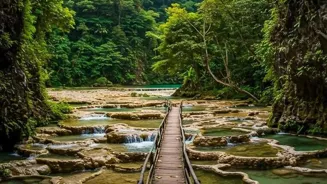Unveiling the Beauty of India's National Parks: A Journey Through Biodiversity and Adventure. Discover the wonders of nature!
India, a land of vibrant culture and bustling cities, also boasts a treasure
trove of natural beauty. Escape the concrete jungle and immerse yourself in the serenity of the great outdoors.
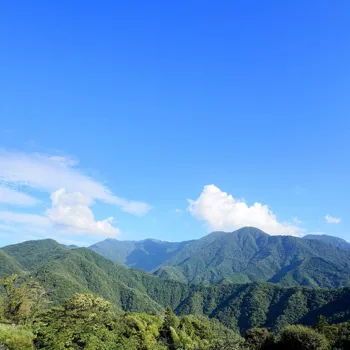
Our country is blessed with a diverse range of ecosystems, from snow-capped Himalayan peaks to lush green forests and arid deserts. National parks offer a unique opportunity to witness this biodiversity firsthand, providing a haven for wildlife and offering breathtaking landscapes.
So, pack your bags, grab your binoculars, and get ready to explore seven national parks that should definitely be on your travel bucket list. These parks provide an enriching experience that connects you with nature, offering a peaceful respite from the daily grind.
Observing animals in their natural habitat, breathing in the fresh air, and witnessing the sheer grandeur of the landscape is an experience that can rejuvenate your mind, body, and soul.
From the majestic tigers of Ranthambore to the elusive snow leopards of Hemis, each park offers a unique and unforgettable experience.
Explore India's oldest park, Jim Corbett, teeming with wildlife and lush landscapes
First on our list is Jim Corbett National Park, Uttarakhand. This is India's oldest national park, named after the famous hunter and conservationist Jim Corbett.
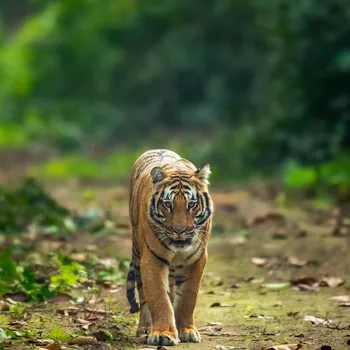
The park is renowned for its population of Bengal tigers, but also houses a diverse range of other wildlife, including elephants, leopards, deer, and various species of birds.
Safari tours are a popular way to explore the park, offering the chance to spot these magnificent creatures in their natural habitat. The park's lush greenery, varied terrain, and the gurgling Ramganga River add to its scenic beauty.
Visitors can choose from jeep safaris, elephant safaris, or even stay in forest rest houses for a more immersive experience. Remember to book your safari in advance, especially during peak season, as permits are limited.
This park beautifully encapsulates the essence of the Indian wilderness, a vibrant ecosystem teeming with life and offering a thrilling experience for wildlife enthusiasts and nature lovers alike. A visit here is not just a vacation, it’s an exploration of the wild heart of India.
Journey to Kaziranga National Park: wildlife conservation success in Assam
Next, we journey to Kaziranga National Park in Assam, a UNESCO World Heritage Site. This park is primarily known for its population of the one-horned rhinoceros, a species once on the brink of extinction. However, Kaziranga's conservation efforts have played a vital role in its survival.
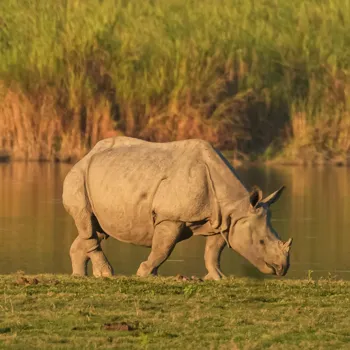
The park also boasts a rich biodiversity, with significant populations of elephants, wild water buffalo, and the elusive Bengal tiger. Birdwatchers will be delighted by the diverse avian population, with numerous migratory species visiting the park during winter.
Explore the park through jeep safaris, elephant safaris, or even boat safaris on the Brahmaputra River, each offering a unique perspective of this amazing landscape.
The landscape is dominated by elephant grass, swampy lagoons, and dense forests, creating a picturesque backdrop for wildlife sightings and offering unparalleled photographic opportunities.
It's a testament to successful conservation efforts and a vibrant example of Indian wildlife thriving in its natural environment.
Explore Ranthambore National Park for tiger spotting in historical setting
Venture further west to Ranthambore National Park in Rajasthan, a former hunting ground of the Maharajas. Today, it's a sanctuary for the Royal Bengal tiger and a prime destination for tiger spotting.
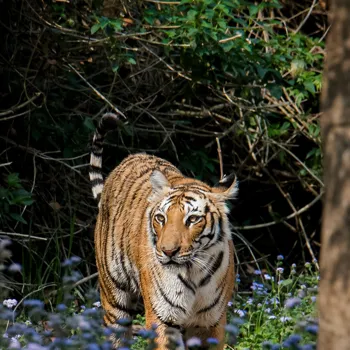
The park's landscape is characterised by dry deciduous forests, rocky terrain, and ancient ruins, including the imposing Ranthambore Fort, which stands as a reminder of the region's rich history.
Safari tours are the primary way to explore the park, with knowledgeable guides helping you navigate the terrain and spot wildlife. Besides tigers, Ranthambore is also home to leopards, sloth bears, deer, and a variety of bird species.
The presence of historical ruins adds a unique dimension to the park, creating a blend of nature and history that is truly captivating. Many tourists admire the tigers of the region. It is a captivating mix of Indian history and natural beauty.
Explore Periyar National Park, Kerala's wildlife haven with boat safaris, trekking, and nature walks
Now, let's head south to Periyar National Park in Kerala, a haven for wildlife and a captivating blend of nature and adventure. This park is centered around the Periyar Lake, formed by a dam built in 1895, which has become a vital source of water for the region's wildlife.

Explore the park through boat safaris on the lake, offering opportunities to spot elephants, deer, and various species of birds along the shoreline. The park's diverse ecosystem also includes dense forests, grasslands, and hills, making it a biodiversity hotspot.
Trekking and nature walks are popular activities, allowing you to immerse yourself in the park's natural beauty and discover its hidden gems.
Periyar is not just a sanctuary for wildlife, it's also a testament to the harmonious coexistence of nature and human communities, with local tribes playing a vital role in the park's conservation efforts. This is one of the main attraction in Kerala, where beauty of nature resides in.
Hemis National Park in the Himalayas: Home to snow leopards, rugged terrain, and unique wildlife
Our next stop takes us high into the Himalayas to Hemis National Park in Ladakh, a challenging yet rewarding destination for adventurous travelers.

This park is renowned for its population of elusive snow leopards, making it a prime destination for wildlife enthusiasts seeking a truly unique experience.
The park's rugged terrain, high-altitude meadows, and snow-capped peaks create a breathtaking landscape, offering stunning views and unparalleled photographic opportunities. Trekking is the primary way to explore the park, venturing through remote valleys and challenging mountain passes.
The park is also home to other Himalayan wildlife, including blue sheep, ibex, and various species of birds.
Hemis is not just a national park, it's a gateway to the majestic Himalayas, offering an unforgettable adventure for those willing to embrace the challenge of exploring this remote and pristine wilderness. The beauty, challenges, risks is all the part of this amazing location.
Explore Sundarbans NP, a UNESCO site with Bengal tigers & vital ecosystem
Finally, we arrive at Sundarbans National Park in West Bengal, a UNESCO World Heritage Site and the world's largest mangrove forest. This unique ecosystem is home to the Royal Bengal tiger, adapted to survive in the saline waters of the mangrove forests.

Explore the park through boat safaris, navigating the intricate network of waterways that crisscross the Sundarbans. Besides tigers, the park is also home to crocodiles, deer, monkeys, and a variety of bird species.
The Sundarbans is not just a national park, it's a vital ecosystem that protects the coastline from erosion and provides livelihoods for local communities.
The mangrove forests provide a unique habitat for a variety of species, highlighting the importance of conservation efforts in preserving this fragile environment. Visiting this park is an immersion into a unique and threatened ecosystem and a celebration of the resilience of nature.
AI Generated Content. Glance/InMobi shall have no liability for the content




